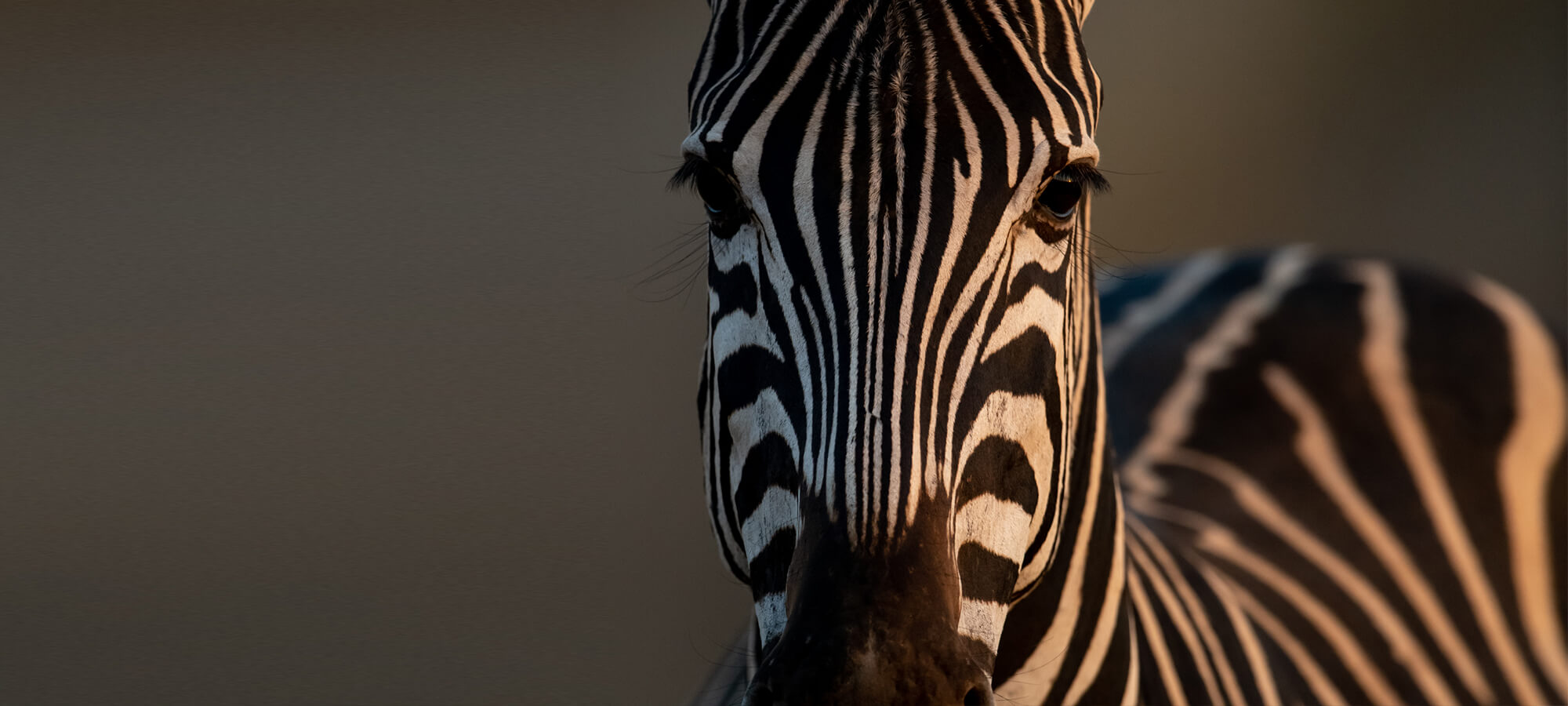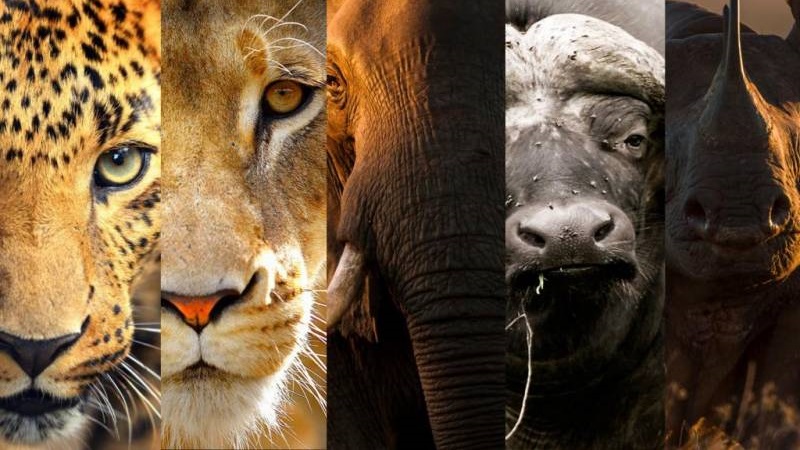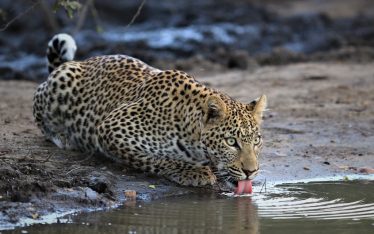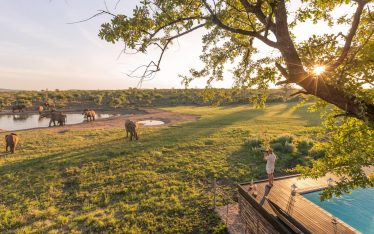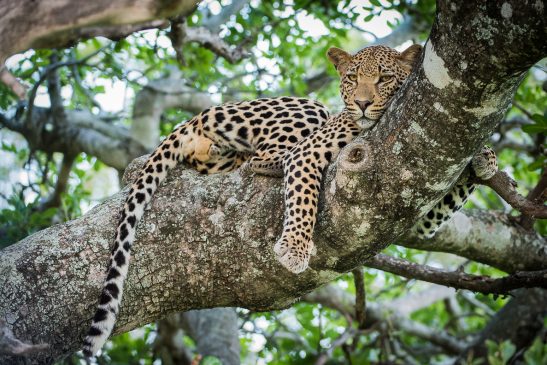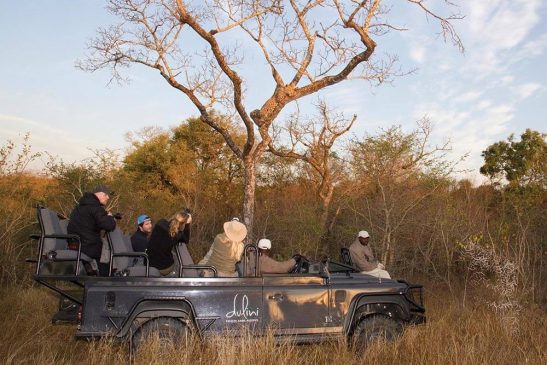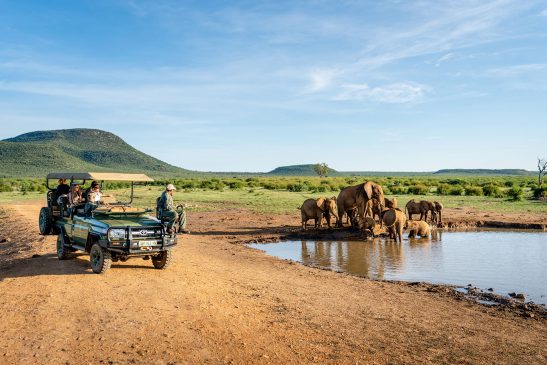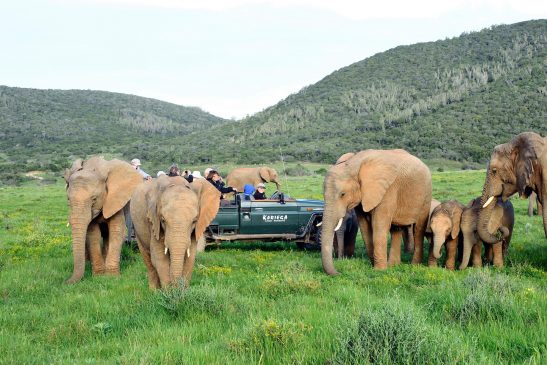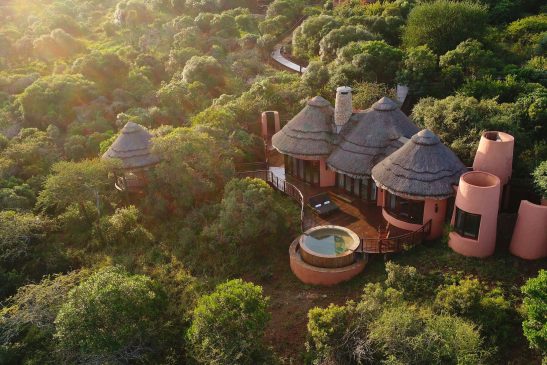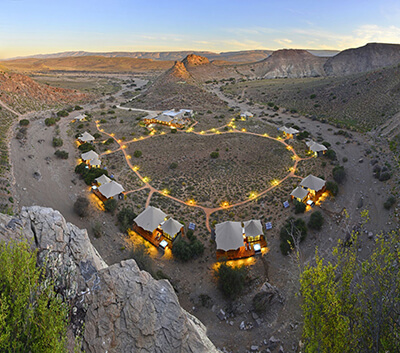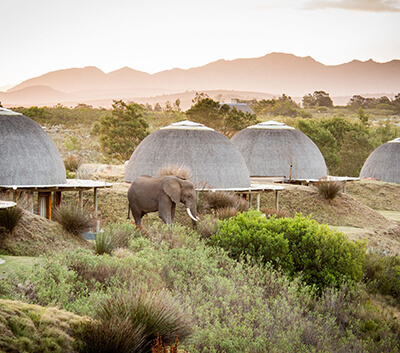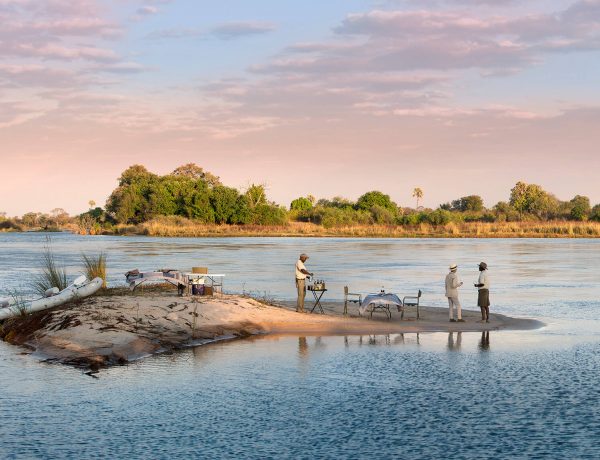It’s good to know a few Big Five facts before going on a safari in Africa. On the trip, you will be able to show off your African wildlife knowledge to travel your companions. Of course, it’s also fascinating to learn about the notorious “Big Five” game animals if you are a nature lover. That is, the African lion, leopard and elephant and the African rhino and Cape buffalo. In this post, you will find a plethora of interesting facts on each of these amazing creatures that you can share with others on your upcoming safari adventures.
Big Five Facts You Can Share on African Safaris
African Lion Facts
The African lion is the largest of the big cats in Africa. Males can weigh up to 190 kilograms (419 pounds) and reach a shoulder height of 1.2 meters. Females, which are smaller, can weigh up to 131 kg (289 lb).
Lions in Africa are really fast. In spite of their size, adults can achieve speeds of up to 81 kilometres per hour (50.3 mph) in short bursts. They rank second amongst the fastest land animals on the continent.
In the African lion’s back paws, there are four sharp claws that can grow up to 3.8 centimetres (1.5 in) long. In their front paws, there are five. The fifth claw, the dewclaw, acts like thumb when holding down prey.
Communication behaviours in lions are complex, more so than with other cats. Their calls include roaring, grunts, growls, moans, snarls, meows, purrs and puffing. Roars can be heard from up to 8 km away!
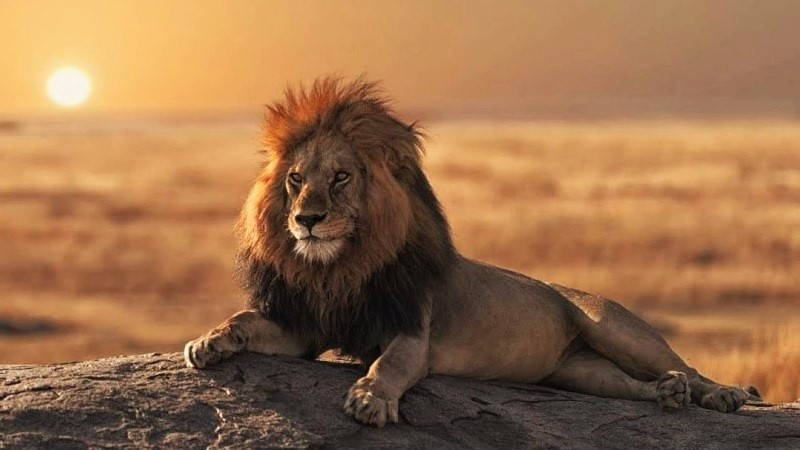
The majestic African male lion.
African Leopard Facts
The African leopard is a strong and stealthy ambush predator that uses its powerful jaw and claws to hunt and drag heavy kills up trees. The cats can take down prey 3 times their size and haul it around with ease.
African leopards have a top speed of about 58 km/h (36 mph). However, they can successfully hunt much faster animals. The cats are incredibly agile and can jump 3 metres high and leap 6 metres across.
More Big Five facts on African leopards: They are not only proficient climbers but also very strong swimmers. Unlike other cats, they feel at home in water, where they sometimes snack on fish and crabs.
Leopards in Africa have excellent eyesight and are solitary animals with large territories, especially the males. They mark their territories with urine and leave claw marks on trees as warnings for intruders.
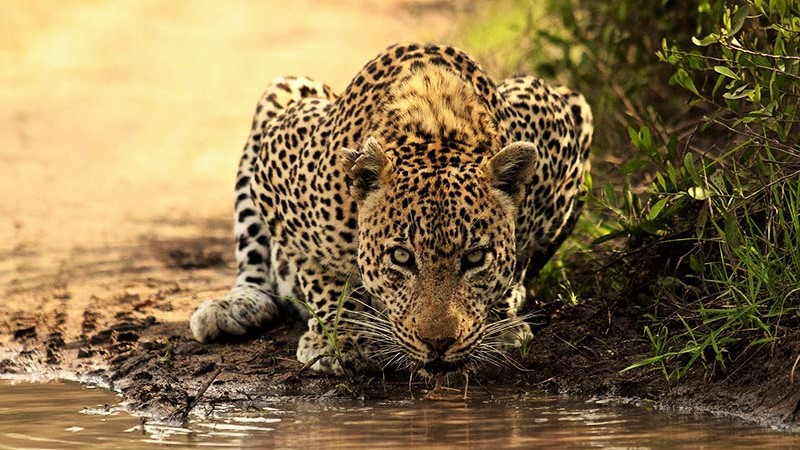
The elusive African leopard — A fantastic hunter!
African Rhino Facts
There are two rhino species in Africa, the black rhinoceros and the white rhinoceros. Despite their names, the animals are distinguished by shape, size, diet and temperament, rather than by colour.
Black rhinos, which Big Five game hunters prefer, are rarer and smaller than white rhinos. They weigh between 900 and 1 400 kg (1,984 to 3,086 lb) and stand 180 centimetres (71 in) high. Their length is 3 to 3.75 metres.
Another name for the black rhino is the “hook-lipped rhino”. It acquired this moniker because it has a pointy upper lip for browsing. In comparison, the white rhino (square-lipped rhino) has square lips for grazing.
Though rhinos are hefty, they can reach running speeds of 55 km/h and turn rapidly. They are surprisingly dexterous with their horns. The black rhinoceros has the highest combat death rate of all mammals.
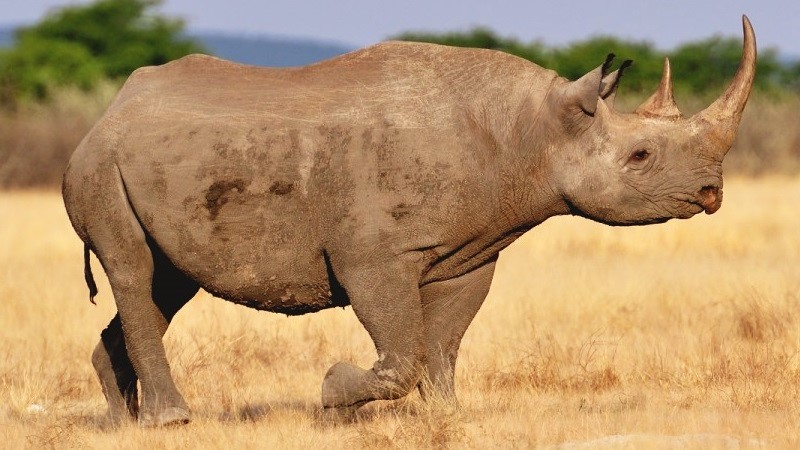
The African black rhino (above), the most endangered species of the Big Five.
African Elephant Facts
The African bush elephant is the world’s largest terrestrial mammal, with fully grown bulls measuring up to 4 metres (13 ft) high and weighing up to 6.35 tonnes (7 US tons). The huge animals can live up to 70 years.
African elephants produce loud trumpeting sounds of up to 112 decibels. They also communicate using low-frequency “rumbles” that can travel several kilometres. Humans cannot hear these subsonic sounds.
Elephants in the African bush have long curved tusks (incisor teeth) and powerful, skilful trunks. They use their trunks to touch, feed, drink, make sounds and more. Under water, elephants use their trunks as snorkels.
Other Big Five facts about African bush elephants include that they eat constantly (up to 150 kg of food per day) and are highly intelligent. Their brains are similar to human brains and have a mass of 5+ kg (11+ lb).
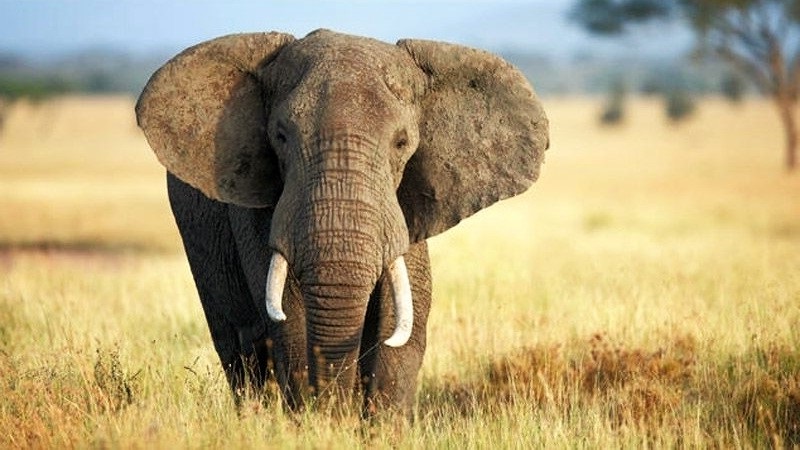
The mighty African bush elephant… Few dare to trifle with this colossal trumpeting beast!
Cape Buffalo Facts
The Cape buffalo is the only Big Five animal that’s not threatened or endangered. It is extremely dangerous, however, killing more people in Africa than any other animal. One of its nicknames is “the Black Death”.
Cape/African buffaloes are robust, unpredictable bovids that are strong physically and in character. Males (bulls) have long, stocky bodies that can weigh up to 1 000 kg (2,204 lb). They also have deadly curving horns.
An African buffalo’s main predator is the lion. When herds come under threat from predators, they circle around their young and face outwards with their heads lowered to form a protective barrier.
Female African buffalo ‘vote’ to determine the direction that the herd should move in. At rest, cows sit facing their preferred direction. The herd then moves in the direction that the majority were pointing towards.
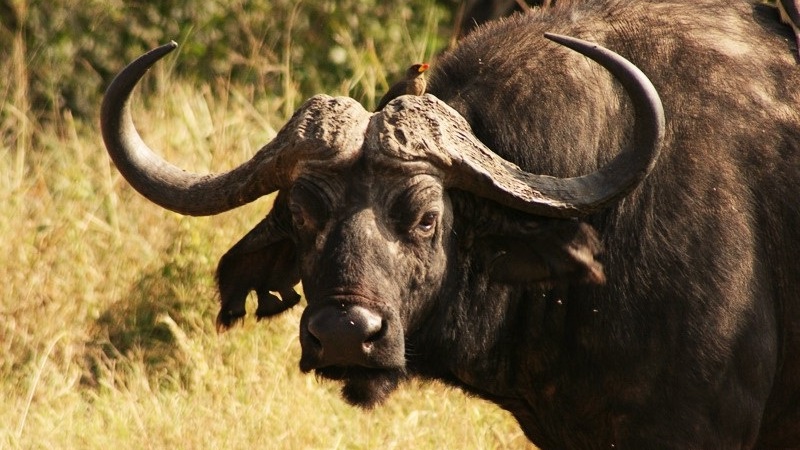
The steely gaze of the tough African Cape Buffalo.
–
Haven’t booked your Big Five safari in Africa yet? We can help you plan a dream safari holiday that provides the best wildlife viewing and luxury South African safari accommodation. Contact Safaris Down South now!
